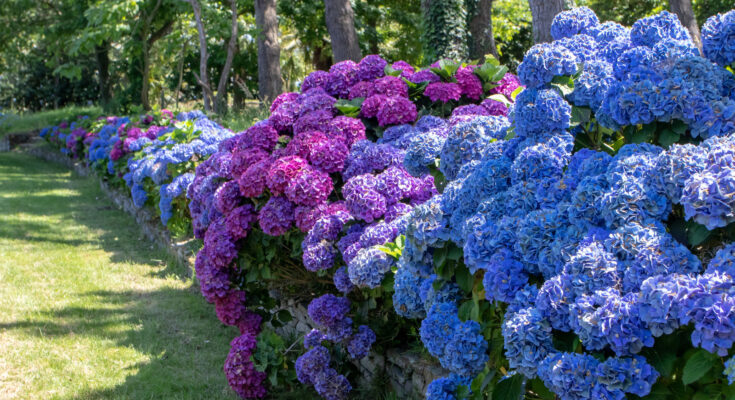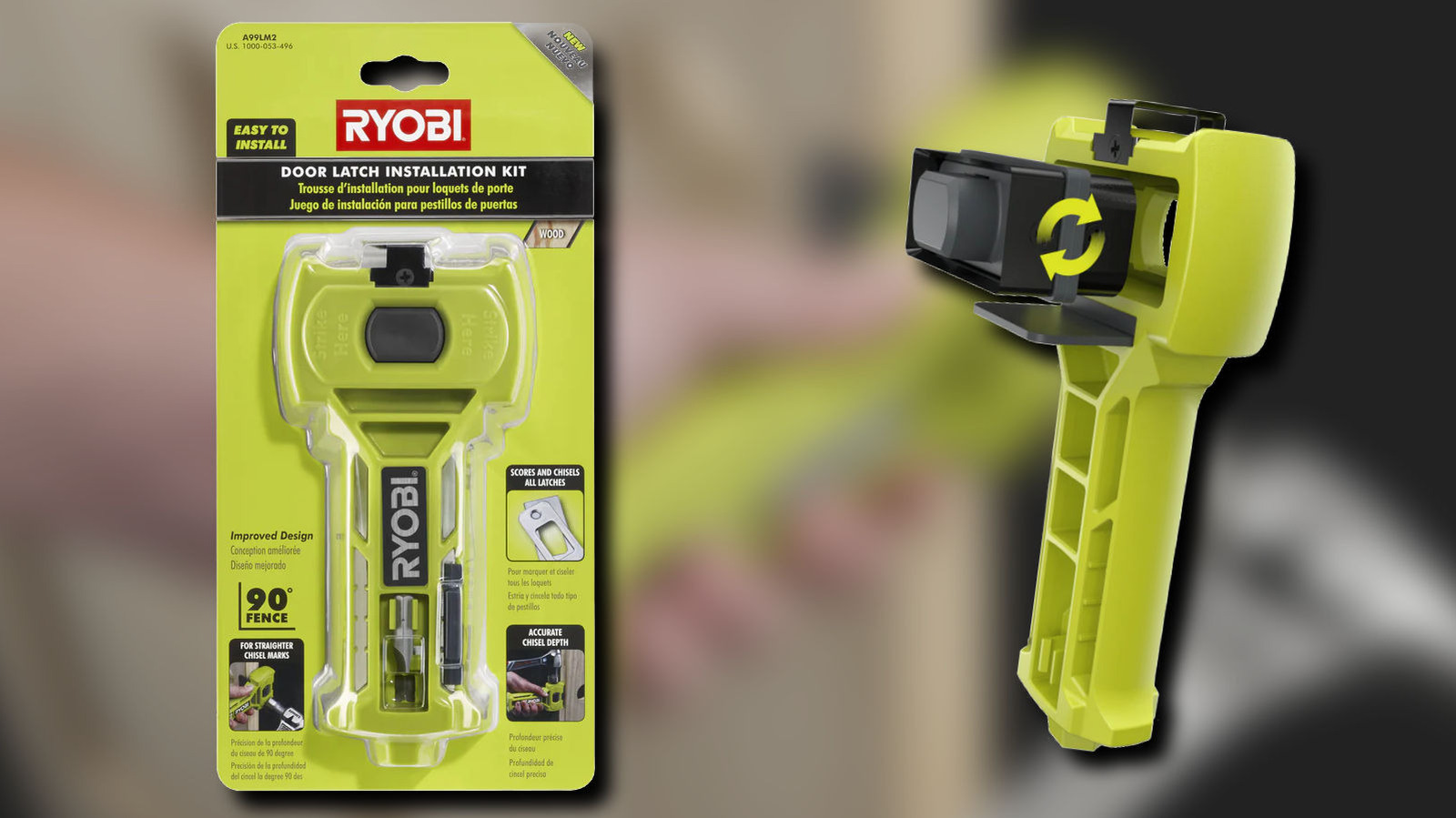15 Beautiful Flowering Shrubs That Grow Best In Morning Sun And Afternoon Shade
In my work as a professional gardener, flowering shrubs are a mainstay of landscaping design. They can provide not only beauty but privacy, shade, and wildlife habitat, and many of them also attract beneficial pollinators. While many flowering shrubs need full sun, there are also many varieties that flourish in partial sun. The best combination of sun and shade for many flowering shrubs, to encourage blooms while also protecting them from intense summer heat, is morning sun and afternoon shade.
The reason morning sun is preferable to afternoon sun is simple: Afternoon sun is usually accompanied by higher temperatures, and in summer, this heat can cause some flowers to wilt. I’ve seen hydrangea blooms, for example, start to droop and wilt in the heat of the afternoon in high summer, and in a heat wave, the flowers may get dry or brown around the edges. Afternoon shade helps protect against this, as does a bit of extra water and light mulching.
Plentiful morning sun, after the cooling temperatures of the evening and dewfall of sunrise, allows the plant to do its thing (photosynthesis!) and process nutrients. To figure out where the sun falls in your yard, you have to do some observing. Not all planting spots face due east (sunrise) or due west (sunset): Some exposures are northern and southern. Also, the angle of the sun shifts as the seasons progress, and will be in a different place in spring versus autumn: This is good to know when choosing planting locations. Many flowering shrubs listed below bloom in summer, but some bloom in spring (azaleas, weigela, and kerria) or autumn (camellia).
Rhododendron
Rhododendrons can get absolutely enormous, and I’ve seen some over 20 feet high. But fortunately, there are many compact hybrids that are perfect for smaller landscapes. These woodland plants love shade but need some sun to bloom, so their preferred sunlight situation is dappled shade. Locating them in a spot with a couple of hours of morning sun and plenty of afternoon shade will suit them just fine. These long-lived shrubs come in a wide assortment of sizes and flower colors, and most thrive in USDA zones 4 to 9, so look around before choosing one to suit your needs.
Azalea
Azaleas resemble their close cousins, rhododendrons, but with smaller leaves and flowers, and an average mature size of 6 to 8 feet. Both shrubs tend to remain evergreen all winter. I’ve had good luck planting azaleas for clients in spots with plentiful morning sun in springtime to help the buds form and bloom. Meanwhile, afternoon shade during summer keeps the leaves vibrant. Azaleas come in a wide range of colors and sizes, and are suitable for USDA zones 5 to 9, but check their labels. Some of my favorites are ‘Gibraltar’ (deep orange), ‘Mandarin Lights’ (golden orange), and ‘Conversation Piece’ (bi-color pink).
Weigela
Weigelas are gorgeous spring-flowering shrubs with trumpet-shaped flowers in shades of pink and white. They tend to add some volume every year, so a bit of light pruning helps keep them in good shape. The best time to prune weigela is late spring or early summer, just as the blooms have dropped off. These shrubs are very suitable for under canopy plantings where they get dappled sunlight, or in a spot with morning sun and afternoon shade. These hardy plants will thrive in USDA zones 4 to 8.
Panicle hydrangea
Panicle hydrangeas are large shrubs with big cone-shaped flower heads that shift their colors beguilingly from summer through fall. These include the classic ‘Limelight’ (pale green flowers that turn creamy white) and ‘Pinky Winky’ (white flowers turn pale pink then rosy red). Newer hybrids of these hydrangeas have improved features, like ‘Limelight Prime’ (smaller size, earlier blooms) and ‘Pinky Winky Prime’ (larger flower clusters). Panicle hydrangeas are cold hardy in zones 3 through 8 and are reliable and easy to maintain. Give them well-drained soil, plentiful morning sun, and afternoon shade to keep the flowers vibrant from spring to autumn.
Broadleaf hydrangea
Broadleaf hydrangeas (Hydrangea macrophylla), also called bigleaf, have large flower heads of pink, blue, or purple. A newer hybrid cultivar, ‘Endless Summer Bloomstruck’ is one of my favorites. It’s cold hardy in zones 4 to 9 (most broadleafs are hardy to zone 5 or 6) and vividly colorful. Location is key for proper sun exposure. Some broadleaf hydrangeas won’t form buds in cold winters: A spot with ample winter sun next to a brick or stone wall helps. Likewise, too much bright sun may cause the flowers to fade in color, so morning sun and afternoon shade are the best balance.
Smooth hydrangeas
Smooth hydrangeas have foliage similar to broadleaf hydrangeas, but are more cold hardy (USDA zones 4 to 9), and the tiny flowers give the large flower head a “smooth” look — hence the name. This variety includes classic, white-flowered beauties like ‘Annabelle’ and ‘Incrediball’ as well as newer ‘Invincibelle’ cultivars with pale pink flowers like ‘Invincibelle Spirit,’ ‘Ruby Smooth,’ and ‘Mini Mauvette’. I love these hydrangeas for their long-lasting blooms and easy care, but too much bright sunlight can crisp the flowers. My ‘Mini Mauvette’ gets morning sun and afternoon shade and blooms beautifully from mid summer to autumn.
Oakleaf hydrangea
Though not as commonly grown as broadleaf, panicle, or smooth hydrangeas, oakleaf hydrangeas are a great landscape plant. These cold hardy (USDA 5 to 9) shrubs get quite large, so when planting oakleaf hydrangeas, be sure to give them plenty of room. Similar to other hydrangea shrubs, a spot with morning sun is perfect for giving the flowers an adequate dose of sunshine. The massive flower trusses get large creamy white flowers that gradually turn rosy pink, similar to panicle hydrangeas, but the bonus here is the striking oak leaf-shaped foliage that turns brilliant shades of maroon, rust, and purple in autumn.
Beautyberry
This showy shrub produces pale pink flower clusters in early summer, followed by bright purple or pink berries (which songbirds love) from late summer through autumn. Beautyberry (Callicarpa) is suitable for partial to full sunlight conditions, so three hours of direct morning sun and dappled or partial afternoon shade are perfect. I have several clients who have these planted in morning sun and afternoon shade conditions, and they all produce copious flowers and berries every year. Callicarpa shrubs like gentle pruning each season to control their size and shape. Cold hardiness varies depending on the variety, with a USDA hardiness range of 5 through 11.
Fothergilla
Like its witch hazel relatives, fothergilla is a true three-season stunner. This lively shrub produces fluffy, fragrant white flower spikes in spring, glossy green summer leaves, and brilliant colors as the foliage turns in autumn. Fothergilla performs best with a good amount of morning sunlight and some afternoon shade, especially in the heat of summer. This long-lived, durable shrub is cold hardy in USDA zones 5 through 8 and likes a well-drained, rich, slightly acidic soil; a light top dressing of pine bark mulch is good for it.
Mountain laurel
Mountain laurel (Kalmia) is a majestic, summer-blooming evergreen shrub. It’s hardy in USDA zones 4 to 9 but may need winter protection in the colder regions. The flowers are white or pale pink with starry red or pink accents. ‘Peppermint’ looks like red and white candies, while ‘Sarah’ is peachy pink. This woodland-friendly shrub prefers dappled sun and thrives under tall trees, or with morning sun and afternoon shade. It likes moist, well-draining, slightly acidic soil and benefits from deadheading of the spent flower clusters. The average mature size is 10 feet tall and wide, but there are some smaller cultivars.
Kerria
I love these sprightly plants. They’re technically a deciduous shrub; they’re cold hardy in zones 4 to 9; and their branches respond well to being cut back in autumn, similar to butterfly bushes. You get fresh new growth every spring, with the green branches covered in bright yellow, single or double flowers. For early spring color, I much prefer these to forsythia (which only blooms for a week or two, becomes hugely overgrown, and needs constant pruning). Even better: These lovely little shrubs will bloom in partial shade! Morning sun works best, waking up their golden blooms on a cold spring morning.
Viburnum
Viburnum is a name given to a wide variety of large deciduous shrubs. Most have white flowers, and some produce late season berries that are attractive to birds. The ‘Korean Spice’ viburnum is a great choice for its creamy pale pink flower clusters that have a sweet, spicy scent, similar to stock or carnations. I love walking past properties that have these trees when they’re in bloom — the scent is delightful. Viburnums prefer a partial shade environment, and morning sun is perfect for the spring blossoms. They are cold hardy in zones 2 to 10, depending on the variety.
Deutzia
These smaller shrubs are powerhouse bloomers in late spring. There are a few kinds of deutzia, and most of them have pink buds that open to crisp clumps of white or pink. ‘Raspberry Sundae’ grows up to 4 feet tall, while ‘Yuki Cherry Blossom’ is more petite at 2 feet tall and wide. They do best in a moist, loamy soil with a good amount of morning sun, which keeps the flowers coming for weeks and keeps the green leaves lush all season. They’re long lived and cold hardy in USDA zones 5 to 8.
Camellia
Lush camellias are often mistaken for roses, with their deep green leaves and many-petalled flowers in soft shades of pink, red, yellow, and white. But these flowering shrubs bloom much later in the season (mid to late autumn) and are evergreen. Camellias perform best with morning sun and afternoon shade, which helps keep their flowers lush. Most camellias, are cold hardy in zones 6 to 9, like ‘Just Chill Double Pink’ and pale yellow ‘Lemon Glow.’ Camellias take a while to get established, but give them well-drained, healthy soil, and you’ll soon have nice big shrubs with gorgeous autumn blooms.
Potentilla
Potentilla, also known as cinquefoil, is a small flowering shrub that grows between 2 to 4 feet tall and 3 to 5 feet wide. The small, five-petalled flowers come in shades of white, yellow, orange, red, and pink. This versatile, cold hardy (USDA 2 to 6) shrub fits many garden spaces and deters deer while attracting beneficial pollinators. It prefers morning sun and afternoon shade to keep flowers coming through the warm weeks of summer. In addition to several white flowering cultivars, there are many colors to try, like ‘Happy Face Orange (peachy apricot), ‘Lemon Meringue’ (pale yellow), ‘Pink Beauty’ (pale pink), or ‘Marmalade’ (golden orange).


